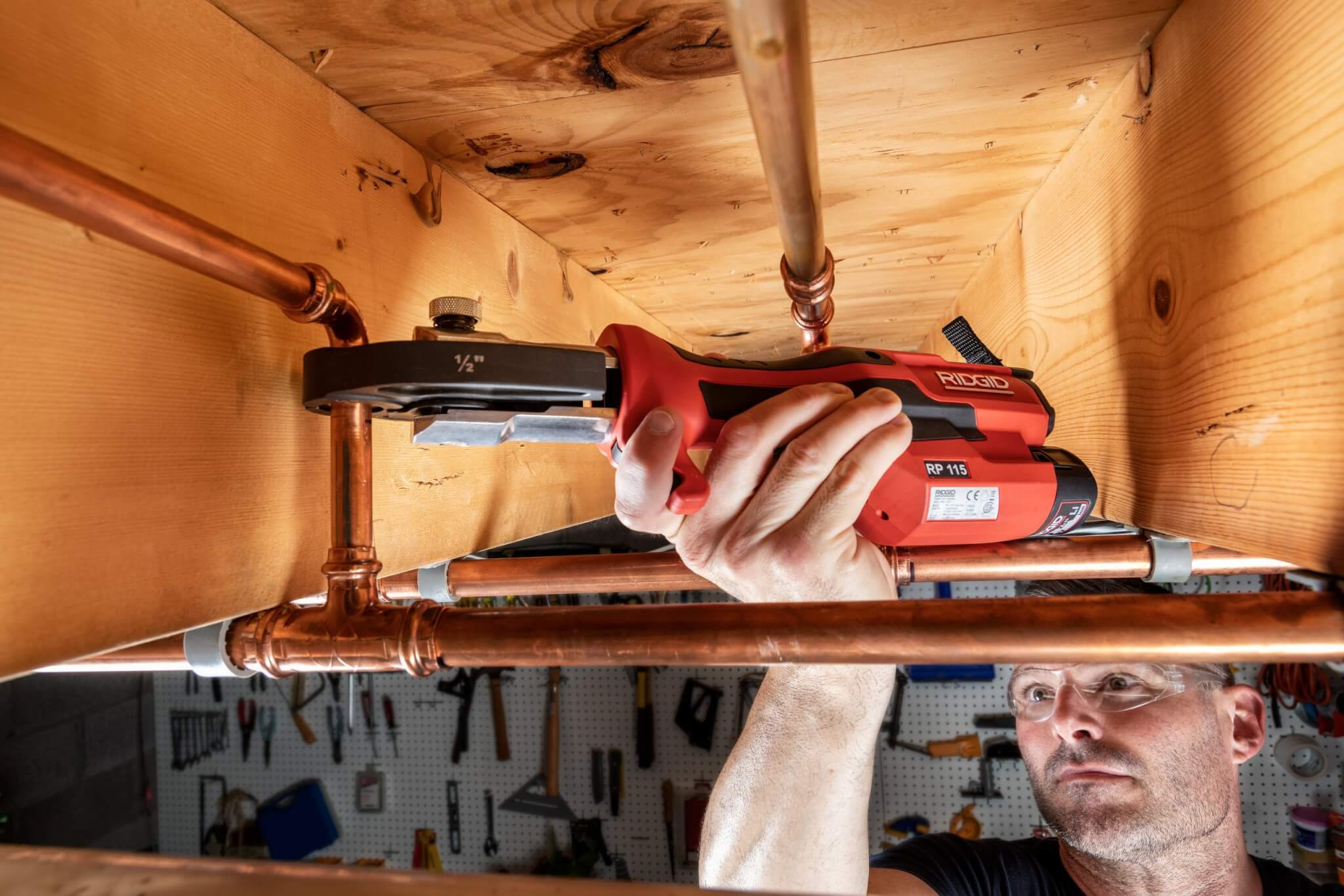
Tools that are light and can be operated with one hand, such as the RIDGID RP 115 Mini Press Tool, minimize strain and fatigue while increasing productivity on the jobsite.
Not long ago, the impact of a tool on its user was not given much thought when it came to tool design. Today, thanks to advancements in technology and a better awareness of how repetitive use of a tool can contribute to injury, ergonomic tool design is becoming the norm. To help ensure you are making the best equipment investment for your team, here are basic ergonomic tool features to look for.
- Tools that are well balanced, lightweight, and can be operated with one hand are ideal. The weight will vary depending on the use of the tool. Thanks to technology, tools are becoming smaller and lighter, minimizing strain and fatigue for the user while increasing productivity on the jobsite. Look for the smallest and lightest tools to meet the demands of your typical jobsites.
- In the case of hand or press tools, the center of gravity should be aligned with the center of the gripping hand. In other words, the tool should feel “easy” to hold either in an upright position or in the position in which it will be used.
- For hand tools used for precision work, the handles and grips should have a “power grip.” Handle diameter recommendations vary, but in general, cylindrical handles of 1½” offer a better power grip, although they can range from 1¼” to 2”. For precision grips, a diameter of 1¼” is recommended. The larger diameter will allow for maximum torque, while the smaller diameter helps with dexterity and speed.
- To ensure a good grip, sufficient friction must exist between the hand and the handle, and friction should remain consistent even with a sweaty hand. Hand tools should be made of non-slip, non-conductive, and compressible materials, such as textured rubber, that help keep the tool from slipping out of the hand.
- To avoid tendonitis in the index finger (otherwise known as “trigger finger”) from tool use, look for solutions that allow you to use two or three fingers to activate switches to reduce discomfort and minimize the risk of injury.
Minor aches and pains add up over time, taking individuals off the jobsite because of injuries or down a different career path entirely. Using tools with even a few ergonomic features will go a long way toward reducing this physical strain and injury.
For more information, visit ridgid.com.


